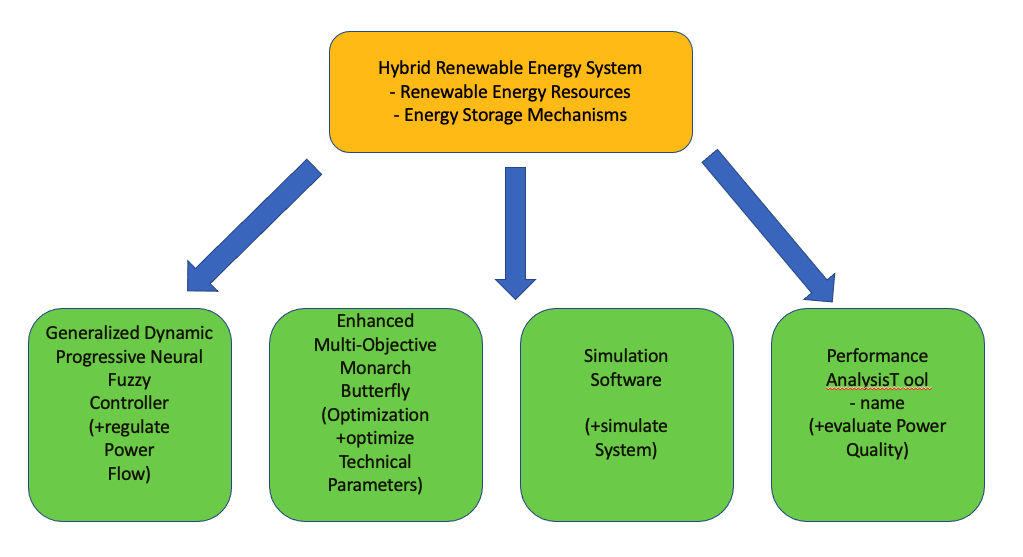 Open Access
Open Access
ARTICLE
Optimization and Intelligent Control in Hybrid Renewable Energy Systems Incorporating Solar and Biomass
1 School of Engineering Sciences, G.D. Goenka University, Gurgaon (Haryana), 122001, India
2 Department of Electronics & Communication Engineering, ABES Engineering College, Ghaziabad, 201001, India
3 School of Interdisciplinary Research Engineering, Indian Institute of Technology, New Delhi, 110016, India
* Corresponding Authors: Arpita Johri. Email: ; Mainak Basu. Email:
(This article belongs to the Special Issue: Innovative Approaches in Clean Energy Systems: Integration, Sustainability, and Policy Impact of Renewable Energy)
Energy Engineering 2025, 122(5), 1887-1918. https://doi.org/10.32604/ee.2025.062355
Received 17 December 2024; Accepted 27 February 2025; Issue published 25 April 2025
Abstract
The globe faces an urgent need to close the energy demand-supply gap. Addressing this difficulty requires constructing a Hybrid Renewable Energy System (HRES), which has proven to be the most appropriate solution. HRES allows for integrating two or more renewable energy resources, successfully addressing the issue of intermittent availability of non-conventional energy resources. Optimization is critical for improving the HRES’s performance parameters during implementation. This study focuses on HRES using solar and biomass as renewable energy supplies and appropriate energy storage technologies. However, energy fluctuations present a problem with the power quality of HRES. To address this issue, the research paper introduces the Generalized Dynamic Progressive Neural Fuzzy Controller (GDPNFC), which regulates power flow within the proposed HRES. Furthermore, a unique approach called Enhanced Multi-Objective Monarch Butterfly Optimization (EMMBO) is used to optimize technical parameters. The simulation tool used in the research work is HOMER (Hybrid Optimization of Multiple Energy Resources)-PRO, and the system’s power quality is assessed using MATLAB 2016. The research paper concludes with comparing the performance of existing systems to the proposed system in terms of power loss and Total Harmonic Distortion (THD). It was established that the proposed technique involving EMMBO outperformed existing methods in technical optimization.Graphic Abstract

Keywords
Cite This Article
 Copyright © 2025 The Author(s). Published by Tech Science Press.
Copyright © 2025 The Author(s). Published by Tech Science Press.This work is licensed under a Creative Commons Attribution 4.0 International License , which permits unrestricted use, distribution, and reproduction in any medium, provided the original work is properly cited.


 Submit a Paper
Submit a Paper Propose a Special lssue
Propose a Special lssue View Full Text
View Full Text Download PDF
Download PDF Downloads
Downloads
 Citation Tools
Citation Tools